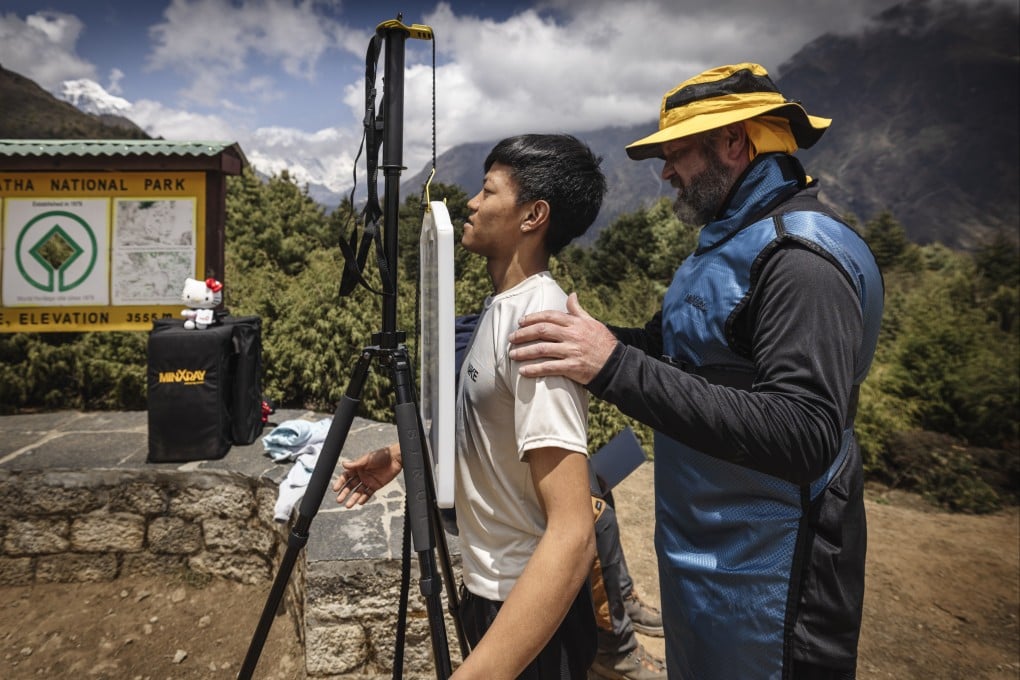X-ray tests in Nepal powered by AI hailed as key in global TB eradication
- The new X-ray technology can be widely deployed to help in early detection of tuberculosis, a major problem in many developing countries

At the peak of the Kala Patthar landmark, 5,500 metres above sea level in eastern Nepal, Jacob Cresswell, a team leader working for the United Nations Stop TB programme, lifts several layers of clothing to place a freezing laptop against his bare stomach.
Twenty minutes later, and with the help of a power bank, the computer is repowered and the expedition’s world record attempt for the highest deployment of artificial intelligence is back on track, which is being reviewed by Guinness World Records.
One of the Sherpas in the group grabs an item resembling a whiteboard and holds it to his chest, as another man aims an espresso-sized machine at his back, and starts beaming it with X-rays. The board collects the data and sends it to the now-thawed computer embedded with AI software. A message pops up half a minute later and the screening is complete. Without AI, the process would have to involve a radiologist and take several hours.
The group of health professionals views their expedition in May as a success. Their goal is to show that portable X-ray machines equipped with AI – each weighing about 25kg – could work in one of the world’s most remote locations. Already commercially viable worldwide, this technology is considered key to eradicating tuberculosis, or TB, which is a major health problem in many developing countries.

Mikkel Broholt, director of operations at Stop TB and a member of the expedition, says many people with the disease have gone undetected and unknowingly risk spreading the disease.
“To eradicate TB, we need to screen more people. If we’re able to carry an X-ray to a peak in the Himalayas, you can take it anywhere,” Broholt says.